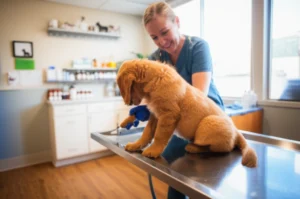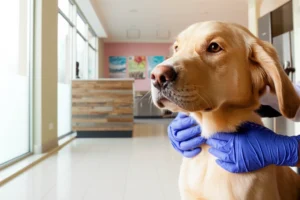Okay, real talk—if you’ve ever winced paying a vet bill, you’re not alone. Pet care costs sneak up on you, sometimes like a cat silently stalking a laser pointer dot. One day it’s a routine checkup, next thing you know, you’re staring at a bill that makes your wallet evaporate faster than you thought possible. But here’s the thing: saving money on vet visits is totally doable. It doesn’t mean you have to scrimp on your pet’s health or skip necessary care. Nope, just a bit of planning, some smart moves, and maybe a little hustle for the best deals.
So pull up a chair, pour yourself some coffee (or tea, no judgment), and let’s chat about how to be a frugal pet parent without turning your vet visits into a financial emergency. Ready?
Prevention Pays Off
What’s the big deal about routine checkups?
Look, I know skipping the vet because “they seem fine” sounds tempting—been there, gulped coffee nervously while reasoning it out. But here’s the kicker: those regular visits catch little things before they snowball into big, expensive problems. Like, that tiny dental tartar buildup could turn into a $1,000 cleaning or worse if ignored. And you might not notice changes in your pet’s behavior, appetite, or energy until things get serious.
A friend of mine once ignored a limp on her dog for a few weeks… turns out it was a torn ligament that required surgery. What could’ve been a simple bandage and rest turned into a $3,000 trip to the vet. Oof. Early detection really is the MVP for your budget and your furry friend’s health.
So yeah, going regularly might feel like an extra cost upfront, but it’s like maintaining your car before the engine explodes—it just saves you way more in the long run.
Vaccines: The tiny pricks that guard your wallet
Vaccinations might sting in the moment, but they’re a shield against diseases that can tank your budget. Think rabies, parvo, bordetella—the usual suspects that can lead to hospital stays lasting days. Keeping your pet’s vaccines current isn’t just about protecting your pup or kitty; it’s about avoiding the heartache of a huge vet bill.
Here’s a pro tip: some mobile clinics, like PetIQ, offer vaccine bundles at better prices without extra exam fees. There are also shelters and humane societies that toss spaying, neutering, and vaccinations into a package deal, often for under $100. Pretty sweet, right?
| Where to Get Vaccines | Typical Cost | Perks |
|---|---|---|
| Standard Vet Clinic | $100–$200 | Includes full exam |
| Mobile Vet Clinics (e.g., PetIQ) | $44–$150 | No exam fees, mobile convenience |
| Animal Shelters / Humane Societies | Often free–$100 | Bundled services, income-based pricing |
Wondering how can i make my vet visit cheaper?? Start by asking around about these options—you might be surprised what’s nearby!
Food & Parasites
Could your pet’s diet be a sneaky money leech?
Feeding junky pet food might look like a bargain now, but some cheap brands pack fillers that mess with digestion, skin, and energy. That can lead to allergies, obesity, or worse—pancreatitis (hello, emergency IV fluids and hospital stays). On the flip side, premium foods may seem pricey, but they cut down vet visits since your buddy stays healthier longer.
One cat owner I know switched to a prescription diet after years of ear infections and expensive antibiotics. She told me it was the best money she ever spent—instead of vet bills every other month, things stabilized, and her cat’s happily purring at home.
Parasite prevention: Less gross, more savings
I know, weird to think about bugs when you just want cuddles. But ticks, fleas, and heartworms are ruthless money drainers—treatment can cost hundreds to thousands. The secret: monthly preventatives. Yup, a small pill or topical application can stop these little devils dead in their tracks.
Keep an eye on your pet for changes in behavior—are they itching more? Lethargic? Itchiness, hair loss, or sudden fussiness might mean it’s time for a vet visit (or call first!). Getting ahead with preventatives is your financial superhero cape here.
DIY & Smart Choices
Can brushing teeth save your bank account?
Funny as it sounds, brushing your dog’s or cat’s teeth can prevent dental disease—one of the biggest cost traps in pet care. Routine cleanings at the vet can hit the $1,000+ range, especially if anesthesia is needed.
Home brushing, using pet-safe toothpaste, can cut down the buildup significantly. It’s a bit of work, sure, but think about less stress for you and your pet, and a much lighter vet bill. Plus, you get some quality bonding time—you’re basically their hero with a toothbrush.
Got ears? Keep them clean
Ear infections are common but easily preventable with regular cleaning. You can buy gentle ear cleaners or ask your vet for recommendations. If your pet’s tossing their head or scratching at their ears, it’s time to check—and nip any infection in the bud.
Bring your own samples? Seriously?
Here’s a sneaky little tip: if your pet is having urinary or digestive issues, bringing a stool or urine sample to the appointment can save you the cost of the vet collecting and analyzing it. It’s easier than you think and lets the vet jump straight to testing.
Small lumps? Get ’em checked early
Tiny lumps are easier and cheaper to remove than big ones. If you find any, even if they don’t seem harmful, get advice early. It’s a classic “pay now or hugely pay later” situation.
Long story short—these little home care moves add up big time in savings!
Spay, Neuter, and Plan Ahead
Why spaying and neutering is your wallet’s best friend
Beyond pet population control, spaying or neutering your pet reduces the risk of cancers and infections needing costly treatments. Shelters often offer these services subsidized by income, so don’t overlook their help. And yes, this one-time fee beats the potentially thousands spent on treating reproductive health issues later.
When Emergencies Hit
Let’s talk emergency vet bills without the panic
Even with all the prevention, emergencies happen. The key is preparation to avoid the financial freak-out. I’ve found setting up a dedicated pet emergency fund—even just $20 a month—can be a godsend.
Pet insurance is another tool in the toolbox, helping cover big or unexpected bills, though it’s crucial to compare plans carefully. Some vets offer payment plans, so don’t hesitate to ask. It’s amazing how often they have options you didn’t know about.
If you do get hit with a tough cost, resources like Emergency vet bill assistance and Charities that help pay vet bills, including The Pet Fund, might be your lifeline.
Worried about cash flow? Wondering do you have to pay vet bills up front? Some places do, some offer payment plans or third-party credit options. Always ask so you can plan ahead.
Final Thoughts
So here’s the deal: saving money on vet visits isn’t about cutting corners—it’s about smart preparation, prevention, and knowing where to look for help. Regular checkups, vaccines, good food, and a touch of home care can save you heaps. Pair that with a pet emergency fund, payment plans, and charity resources, and you’re giving your pet the best life possible without the stress of surprise bills.
Think of it like this—being a frugal pet parent is like planting seeds for your pet’s health garden. A little effort now blossoms into fewer emergency trips and happier days (and nights) avoiding those wallet-squeezing vet bills.
What’s one thing you’ll try first? Booking that next routine visit? Switching to a better diet? Maybe starting a tiny emergency fund? Whatever it is, take that step. Your furry family member—and your bank account—will thank you for it.
Oh! And before you go, if you ever feel stuck or overwhelmed, remember there’s help out there: Emergency vet bill assistance, Charities that help pay vet bills, or a quick peek at how can i make my vet visit cheaper? might take the edge off when you need it most.













